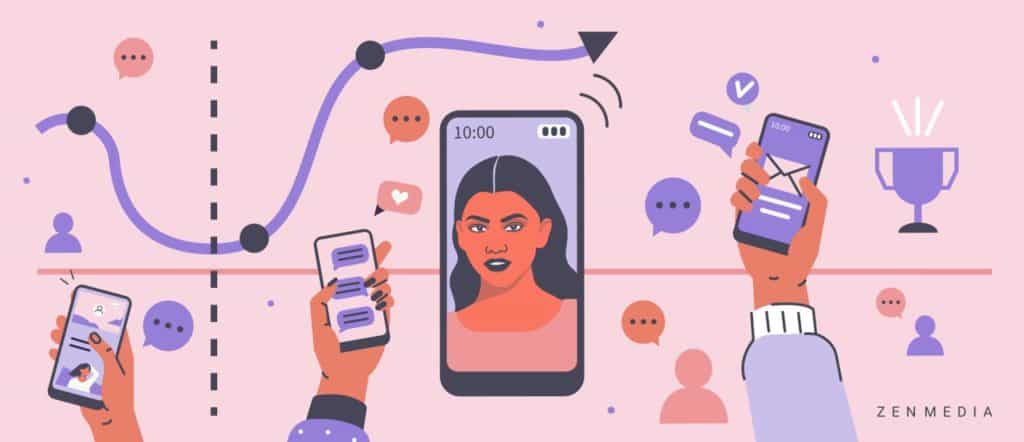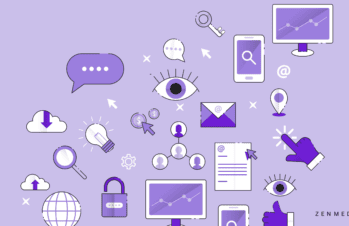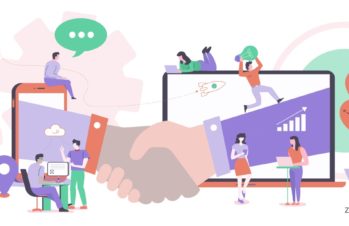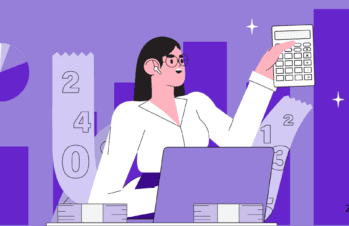We see it all the time.
Companies set up marketing events using the same strategies that went stale decades ago. And while some marketing tactics are evergreen, there are plenty of strategies that just don’t work in our real-time digital age.
Historically, many companies worked their whole marketing strategy around events—especially B2B companies that worked the trade show circuit. For many of these companies, these events were their main point of contact with the public and those in their field. They were the start and endpoint, the main event the rest of their year hinged upon.
And for many, this is still true.
Marketing, like so many other industries, has changed drastically since the advent of social media—and those who stick to pre-social media strategies are being left behind.
Over the last two years, the pandemic-related risks and regulations have shut down a lot of these events, and companies have had to pivot.
The result?
Many moved their events online or made them asynchronous releases rather than live events. Others have begun to question why they were doing these events in the first place and if they ever wanted to go back.
The truth is, this event-focused method hasn’t been working for anyone for a long time. A handful of events per year just doesn’t generate enough of an ROI for the companies hosting the events or the attendees.
That’s because the way prospective customers convert has changed dramatically.
What does this have to do with Zendaya? Don’t worry. We’ll get to our girl Z. Read on.
How the Role of Events Is Changing for Businesses
Think about it this way. Events used to be THE thing—the starting point of contact or the first time someone might become aware of or gain exposure to your company.
Today, few will bother attending an event unless they’ve already had some exposure to your brand. Your prospects, your customers, and your partners all want and expect their introduction to a brand to be online and low-pressure. And they’re smarter than ever, which means they’re already doing the research themselves before they even bother to interact with you.
Companies need to start looking at events as tipping points versus the main point of contact.
To set up a tipping-point event, you need to build a significant amount of buzz around your business. The conversation needs to be in progress, happening across multiple platforms, so that when the event is announced, people know who you are.
People shouldn’t be coming to your booth and asking what you do. They should be saying. “I’ve heard of you—you guys are everywhere! And I am interested in working with you.” This puts you a few steps into your nurturing journey with event attendees.
No matter what got them through the door, the event is a culmination, not a first introduction.
So now, on to Zendaya…
Super Bowl Ads and What the Zendaya Effect Means for Marketers
Think about traditional Super Bowl ads.
If you are in the ad agency space, you know how secretive the process has been in the past. You essentially have to sign your soul away to make sure no one leaks the punchline, the concept, the slogan. But more recently, we’ve started seeing “ad plus”, meaning ad plus digital amplification.
It started with hashtags.
Hashtags gave Super Bowl ads a much further reach for a longer amount of time. They eventually turned into memes and became pop culture staples for years to come (think Oreo’s “you can still dunk in the dark” moment from the 2013 Super Bowl).
But Squarespace is taking it a step further. They teamed up with the Princess of Gen Z, Zendaya (and one of our personal faves), for their 30-second Super Bowl slot. And before the ad even went live, they created so much buzz about their partnership that their ROI increased before the ad even aired.
Squarespace realized that the Super Bowl ad was really just a tipping point in a greater marketing strategy. There was a significant amount of runway to build buzz beforehand and get people talking about their company for an extended period of time.
Because of this, they have more share of voice than any of their competitors right now.
What Company Events Can Learn from The Zendaya Method
So how can events expand their reach? How can they make more partnerships and take advantage of a conversation that is already happening?
They make their event almost an afterthought. It sounds counterintuitive, but hear us out.
Brands need to make their big events—whether live, asynchronous, online, or in-person—a culmination of everything they’ve done previously. It should be the point that everything comes together as part of a natural progression of who you are and what you do.
The real work needs to happen on the front end, and should include figuring out who your audience resonates with, what will get people talking, and how to get your content in front of people’s eyes (hello social media!).
Related reading: Why Do B2B Brands Need Social Media Marketing?
Before the event, there should be so much buzz that when the event happens, it isn’t a “Tah dah!” moment—it’s people coming to your event because no one has been able to stop talking about what your company is doing. That’s a very different conversation.
The other thing you have to realize in marketing is that the buyer cycle has changed dramatically over the last two years, and most people are completely unaware of it. Forrester did a lot of research on how many touchpoints it takes for someone to make a purchasing decision. Before the pandemic, it was 17.
Now it’s 21.
That means 21 points of contact before someone actually does business with you. If you’re relying on one event or one ad, you’re going to be sorely disappointed. You need a good cadence and consistency to help you get to your desired outcome.
Let’s make it a tiny bit more challenging, shall we?
One element that makes calculating that 21 number more complicated is that many of these touchpoints and the decisions that follow are being made on “dark social”—in Slack channels, Reddit groups, and LinkedIn messages, not out in the open.
So that group of prospects that attend your tradeshow—chances are they’ve already figured out which companies they want to go see before they even step inside the building. They’ve discussed it in Slack messages, contacted people they want to meet with on LinkedIn, and looked at Reddit communities to see what seems exciting. In fact, 64% of people are already halfway through the buying cycle before they actually reach out to a salesperson.
So, long before you even have the opportunity to convince someone to work with you, they’ve already made up their mind. That’s why your event needs to be the tipping point. It tests the ROI of what you’ve been doing and indicates whether it’s working.
For Squarespace, their Superbowl-tipping-point event showed that they know their audience and their buzz-creating strategy worked—And how could it not work? Hello, Zendaya.
Ready to test your strategy with a buzz-worthy event? Get in touch. We’re happy to help!





